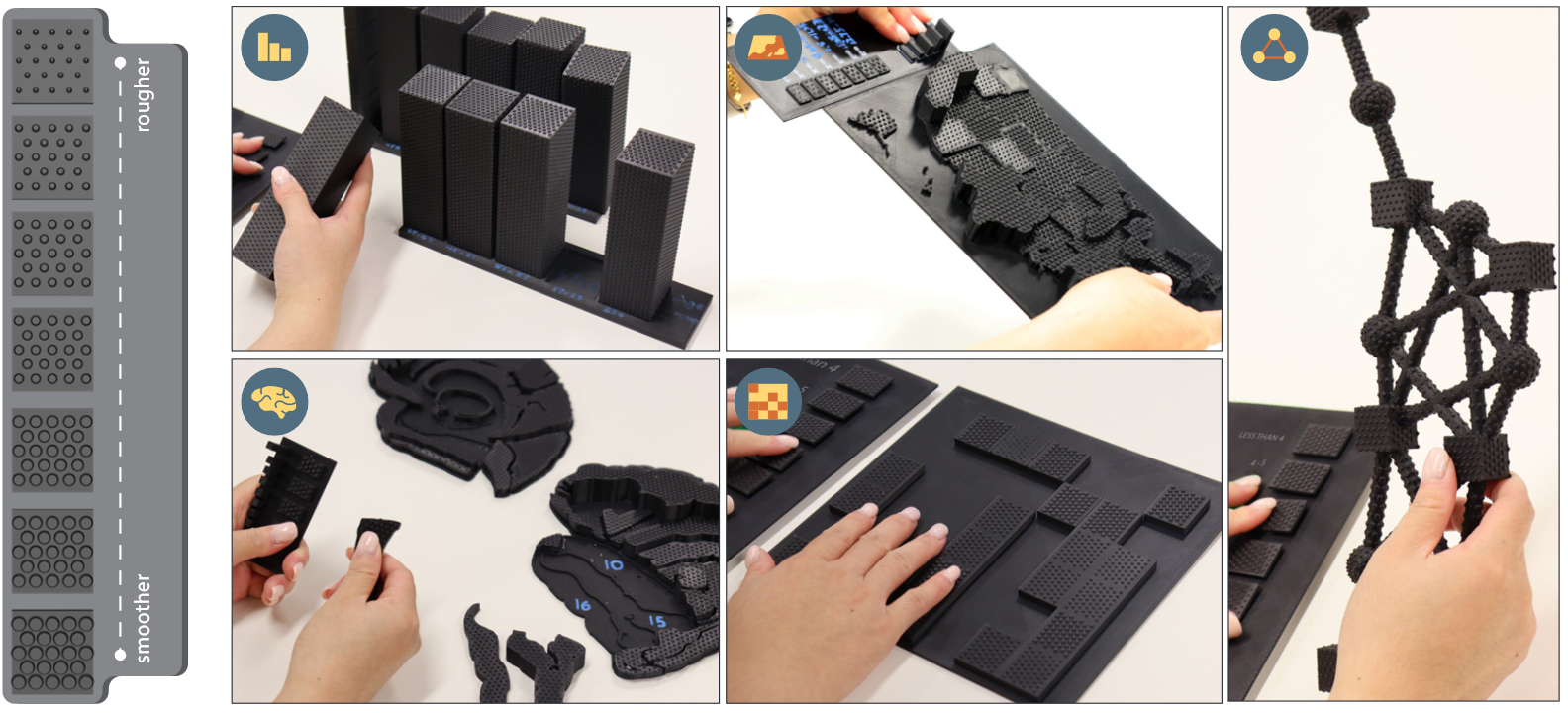
Honorable Mention Award
Xiaojiao Du, Kadek Ananta Satriadi, Adam Drogemuller, Brandon Matthews, Ross T. Smith, James Walsh, Andrew Cunningham
CHI Conference on Human Factors in Computing Systems.
Holulu, Hawaii.
2024.
This publication is student-led.

While visual channels (e.g., color, shape, size) have been explored for visualizing data in data physicalizations, there is a lack of understanding regarding how to encode data into physical material properties (e.g., roughness, hardness). This understanding is critical for ensuring data is correctly communicated and for potentially extending the channels and bandwidth available for encoding that data. We present a method to encode ordinal data into roughness, validated through user studies. In the first study, we identified just noticeable differences in perceived roughness from this method. In the second study, we 3D-printed proof of concepts for five different multivariate physicalizations using the model. These physicalizations were qualitatively explored (N=10) to understand people's comprehension and impressions of the roughness channel. Our findings suggest roughness may be used for certain types of data encoding, and the context of the data can impact how people interpret roughness mapping direction.
DOI: https://doi.org/10.1145/3613904.3641900
Preprint: download
Presentation: watch
Tags: chi,physicalization,visualization
Strollytelling: Coupling Animation with Physical Locomotion to Explore Immersive Data Stories
Active Proxy Dashboard: Binding Physical Referents and Abstract Data Representations in Situated Visualization through Tangible Interaction
Defining Embodied Provenance for Immersive Sensemaking
ProxSituated Visualization: An Extended Model of Situated Visualization using Proxies for Physical Referents
User-Driven Constraints for Layout Optimisation in Augmented Reality
Tangible Globes for Data Visualisation in Augmented Reality
Quantitative Data Visualisation on Virtual Globes